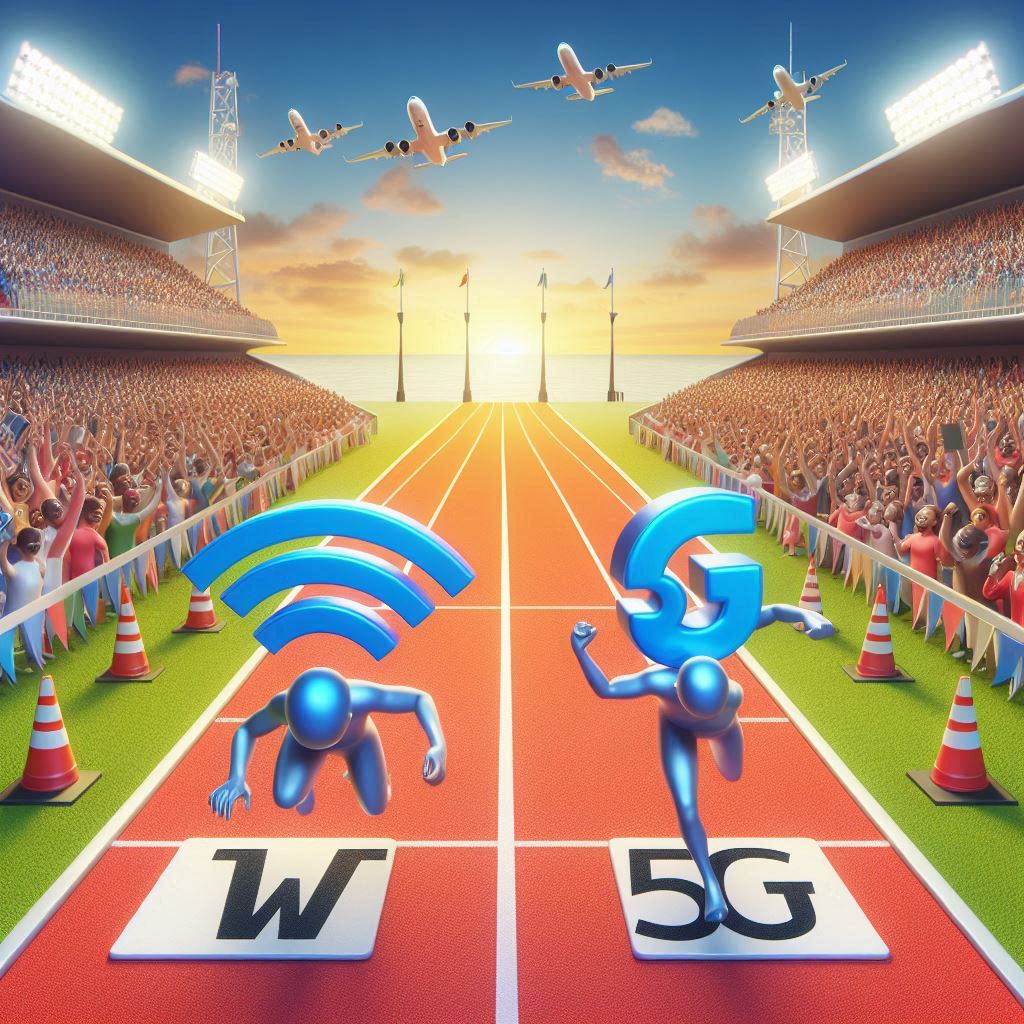Wi-Fi and 5G are two dominant wireless technologies that play crucial roles in our connected world. While they serve overlapping purposes, they are designed for different use cases and environments. This article compares Wi-Fi and 5G technologies, explores their respective use cases, and examines how they can work together to provide comprehensive connectivity solutions.
Comparison of Wi-Fi and 5G Technologies
- Technology Overview
Wi-Fi:
Standard: Based on IEEE 802.11 standards.
Frequency Bands: Primarily 2.4 GHz and 5 GHz, with the recent addition of 6 GHz in Wi-Fi 6E.
Range: Typically covers small to medium areas like homes, offices, and public spaces.
Deployment: Easy to set up and use with existing infrastructure like routers and access points.
5G:
Standard: Based on 3GPP (3rd Generation Partnership Project) standards.
Frequency Bands: Utilizes low-band (below 1 GHz), mid-band (1-6 GHz), and high-band (24-100 GHz, known as millimeter-wave).
Range: Ranges from broad coverage with low-band to small cells with high-band, providing a mix of wide-area and localized coverage.
Deployment: Requires extensive infrastructure with cellular towers, small cells, and edge computing nodes.
- Speed and Latency
Wi-Fi:
Wi-Fi 6 (802.11ax): Offers speeds up to 9.6 Gbps with lower latency and higher efficiency compared to previous generations.
Latency: Typically in the range of 5-30 milliseconds, suitable for most consumer and business applications.
5G:
Speed: Theoretical speeds up to 20 Gbps for high-band 5G (millimeter-wave); more commonly 1-10 Gbps in practical use cases.
Latency: Can achieve ultra-low latency as low as 1 millisecond, critical for real-time applications like autonomous driving and industrial automation.
- Coverage and Capacity
Wi-Fi:
Coverage: Best suited for localized areas such as homes, offices, and public hotspots. Limited by walls and other physical obstructions.
Capacity: Can handle a large number of devices within a confined space, especially with advancements in Wi-Fi 6.
5G:
Coverage: Designed for wide-area coverage, including urban, suburban, and rural areas. High-band 5G is limited to line-of-sight due to poor penetration.
Capacity: Designed to support a massive number of devices per square kilometer, ideal for densely populated areas and IoT deployments.
- Cost and Accessibility
Wi-Fi:
Cost: Generally lower cost for end-users. Equipment like routers and access points are relatively affordable.
Accessibility: Widely accessible with simple setup procedures, commonly found in homes, businesses, and public areas.
5G:
Cost: Higher deployment and operational costs due to the need for extensive infrastructure. Costs are typically borne by network providers, with end-users subscribing to services.
Accessibility: Dependent on network rollout by telecom providers, with varying availability based on location.
Use Cases of Wi-Fi and 5G
- Wi-Fi Use Cases
Home Networking: Providing internet connectivity for devices such as smartphones, laptops, smart TVs, and IoT devices.
Business Environments: Supporting office networks, conference rooms, and enterprise applications.
Public Hotspots: Offering internet access in cafes, airports, hotels, and other public places.
Smart Homes: Enabling connected devices like smart thermostats, security cameras, and home assistants.
- 5G Use Cases
Mobile Connectivity: Delivering high-speed internet and low latency for smartphones and tablets on the go.
Smart Cities: Supporting infrastructure for traffic management, public safety, and environmental monitoring.
Industrial Automation: Enabling real-time communication and control for manufacturing, logistics, and robotics.
Healthcare: Facilitating telemedicine, remote surgery, and real-time patient monitoring with low latency and high reliability.
Autonomous Vehicles: Providing the necessary connectivity for vehicle-to-everything (V2X) communication, ensuring safety and efficiency.
Collaboration Between Wi-Fi and 5G
- Complementary Roles
Seamless Connectivity: Devices can switch between Wi-Fi and 5G based on availability and performance, ensuring continuous connectivity.
Offloading Traffic: 5G networks can offload data traffic to Wi-Fi networks in high-density areas to reduce congestion and improve performance.
Enhanced Coverage: Wi-Fi can extend the reach of 5G networks indoors where cellular signals may be weak or obstructed.
- Integrated Solutions
Smart Homes and Offices: Combining Wi-Fi for indoor connectivity and 5G for outdoor and mobile use provides a comprehensive network solution.
Public Spaces: Using 5G for broad area coverage and Wi-Fi for localized high-capacity zones, such as stadiums or concert venues, enhances user experience.
IoT Deployments: Utilizing Wi-Fi for stationary IoT devices and 5G for mobile or wide-area IoT applications ensures optimal connectivity.
- Future Innovations
Network Slicing: Both Wi-Fi and 5G can use network slicing to allocate resources efficiently, catering to specific needs such as gaming, video streaming, or industrial IoT.
Edge Computing: Integrating edge computing with both Wi-Fi and 5G can reduce latency and enhance performance for critical applications, providing localized data processing closer to the end-user.
Wi-Fi and 5G technologies each have distinct strengths and are suited for different use cases. While Wi-Fi excels in localized, high-capacity environments, 5G offers wide-area coverage and low-latency communication.
By working together, these technologies can provide seamless, efficient, and robust connectivity solutions for a wide range of applications, from smart homes and businesses to industrial automation and smart cities. The future of wireless connectivity will likely see an increasingly integrated approach, leveraging the strengths of both Wi-Fi and 5G to meet the growing demands of our connected world.
A Guide to Mesh Wi-Fi Systems: Benefits and Differences from Traditional Wi-Fi Extenders



